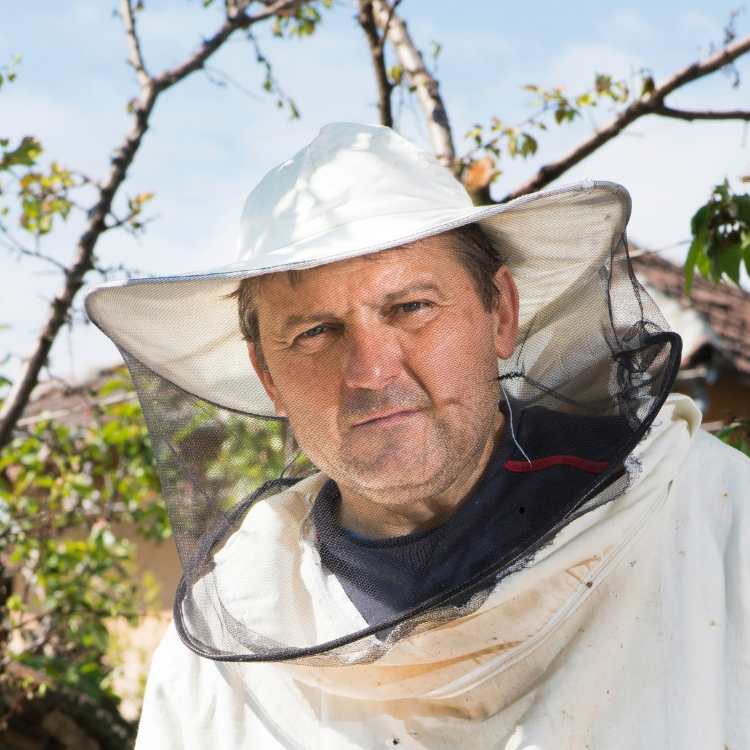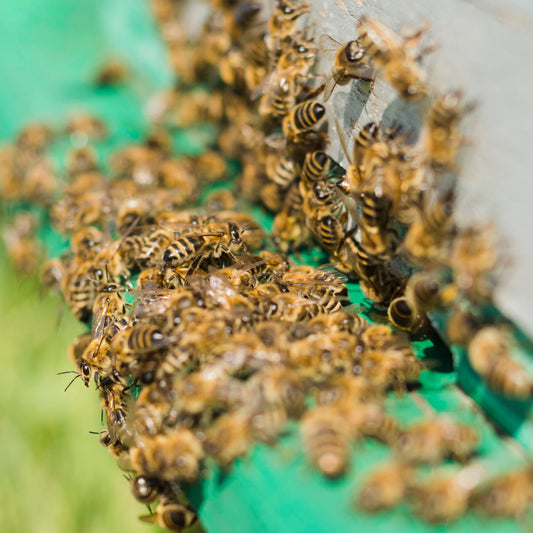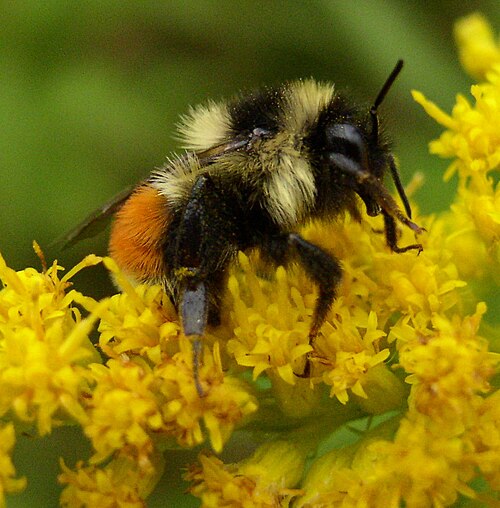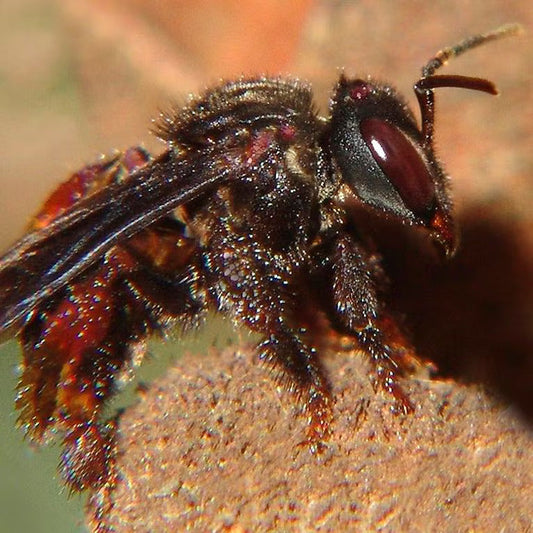Bees in Georgia play a very critical role in pollination and crop production across the state’s orchards, gardens and wild habitats. These insects support commercial agriculture, sustain native ecosystems and keep pollination networks intact. While the honeybee often gets the spotlight, Georgia’s native bees-wild, solitary, and highly efficient-do a lion’s share of the work, often very much unnoticed. In North Georgia’s apple orchards, decades of sampling and field studies have revealed an astonishing range of native pollinators. Over 120 species of wild bees from five different families visit the apple blossoms alone. These bees in Georgia include some of the most specialized, seasonal, and ecologically important pollinators found anywhere in the Southeastern US.
We list five of the most commonly observed bees in Georgia apple orchards, apart from the very common honeybee that we all know about.
Mining bees or the Georgian Apple Bee (Andrena crataegi)
This spring-emerging ground nester is the most common native bee that you can find in Georgia’s apple orchards. Locally recognized as the Georgia Apple Bee, Andrena crataegi plays a dominant role during apple bloom. The females collect pollen using specialized leg hairs and time their emergence precisely with the flowering of the apple tree.
Mining bees prefer to nest communally in exposed spoil under orchard canopies. Because apple orchard soil is left untilled, it supports strong populations of these bees year after year. Mining bees make up over 30% of native bee populations during apple bloom.

Eastern carpenter bees (Xylocopa virginica)
Carpenter bees are large, wild, and impossible to ignore. These guys are among the most abundant pollinators in Georgia orchards. The females of the species tunnel into untreated wood to nest, while both the sexes forage actively throughout the growing season. Though often mistaken for bumblebees, these bees in Georgia can be identified by their shiny, black abdomen. Carpenter bees pollinate aggressively and are three times more abundant than other wild species in some locations. They are essential for fruit crops requiring heavy pollen transfer.

Mason bees (Osmia species)
Mason bees are solitary, fast moving pollinators with metallic blue or green bodies. Female mason bees nest in the wild in natural cavities, packing each cell with pollen and nectar before sealing it with wax. These bees in Georgia are active early in the year, aligning their flight season with spring blooms. With 19 species recorded in Georgia, mason bees form a key part of early season pollination. Their underbelly hairs, called scopa, allow them to transport significant amounts of pollen between flowers.

Leafcutter bees (Megachile species)
These bees are medium sized and solitary, known for their precision cutting of leaves to line their nests. The females carry pollen on their underbellies and often curl their abdomens when fully loaded. Their flight season extends from summer into early fall. These bees in Georgia nest in both natural cavities and underground tunnels, but that depends on the species. With over three dozen species of leafcutter bees in the state, their adaptability and foraging speed make them ultra reliable pollinators well beyond apple bloom.
Bumblebees (Bombus species)
Seventeen bumblebee species can be found in Georgia. These cute, robust creatures begin the season with large queens emerging in early spring, looking for food and shelter to make new colonies. Bumblebee workers take over the pollination duties later in the season.
Female bumblebees carry pollen in specialized baskets on their hind legs and can visit thousands of flowers in a single day. They also have the ability to buzz pollinate where they vibrate flowers to release their pollen, which makes them extremely productive for crops like apples and blueberries. These bees in Georgia thrive near natural edge habitats and do particularly well in smaller orchards that have surrounding wild vegetation cover.
Why do bees in Georgia matter now more than ever?
Georgia’s native bee species provide irreplaceable services to both agriculture and the broader ecosystem. Wild bees often pollinate plants that honeybees tend to skip over, thus extending the bloom season coverage. They are the specialists in local flora. Their diversity means no single disease or environmental threat can wipe them out all at once.
And as climate patterns shift and commercial pollinators face the growing challenges, wild bees in Georgia offer a dependable alternative and safety net. There is no need for human management. Just enough space, soil and floral resources and these guys would really thrive. For orchard owners, gardeners and land managers, supporting these bees is not just a gesture on conservation, it is more of a solid investment in productivity and long term sustainability.
Bees in Georgia are working, flying, pollinating and keeping the state’s food systems running. With smart land use and basic protection, the numbers can grow substantially. The buzzing in the orchards is not just a background noise anymore; it is the sound of a thriving ecosystem that is getting its job done.
Want to learn more about bees and their wonderful buzzing world? Consider following our full blog here.




